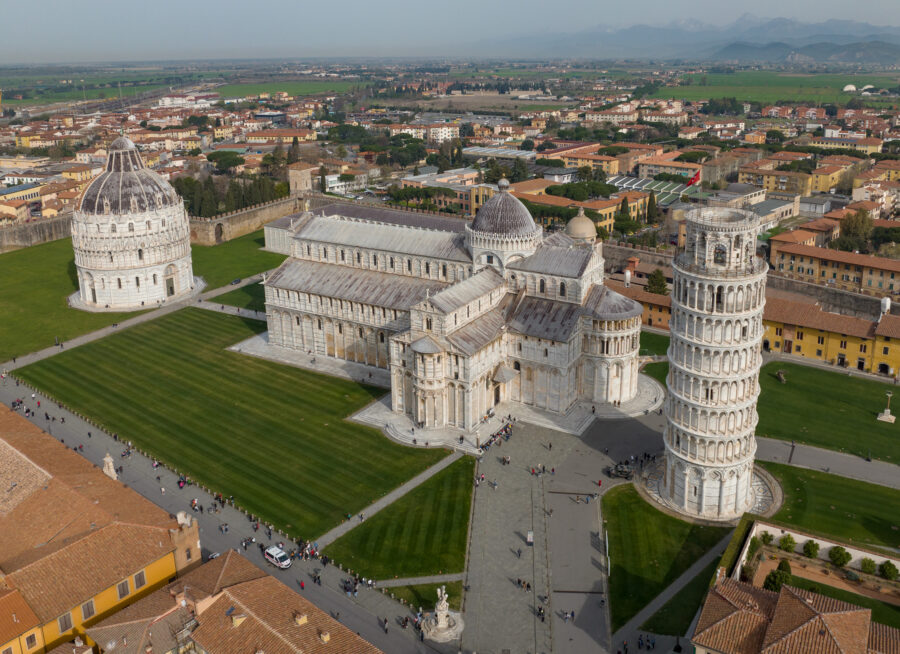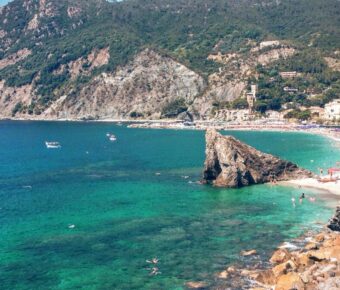
Pisa vs Arezzo: Which Hidden Tuscan Gem Offers the Better Italian Experience in 2025
Tucked away in the heart of Tuscany, Pisa and Arezzo offer travelers two unique paths to explore Italian history and culture. These enchanting cities each bring their own distinct flavor to the region’s rich tapestry of experiences. While Pisa draws millions with its iconic Leaning Tower and grand Piazza dei Miracoli, Arezzo captivates visitors with its medieval architecture, stunning frescoes, and more intimate atmosphere away from the tourist crowds.
Both cities tell different stories of Tuscany’s past. Pisa showcases maritime glory and Romanesque splendor, with its riverside location and architectural marvels. Arezzo reveals medieval charm through its hilltop position, ancient churches, and strong artistic heritage as the birthplace of Giorgio Vasari and home to Piero della Francesca’s masterpieces.
A visit to either destination promises authentic Italian experiences, from morning espresso in centuries-old piazzas to evening passeggiatas among locals. The choice comes down to whether travelers seek Pisa’s world-famous sights or Arezzo’s hidden treasures waiting to be discovered.
Contents
- Historical Significance
- Geographical Overview
- Access and Transportation
- Climate and Best Time to Visit
- Cultural Highlights
- Art and Architecture
- Culinary Scene
- Festivals and Events
- Economic and Demographic Data
- Tourism and Accommodation
- Hotels and Lodgings
- Tourist Attractions and Landmarks
- Guided Tours and Activities
- Sports and Recreation
- Football Clubs and Arenas
- Local Sporting Events
- Comparative Analysis: Pisa vs Arezzo
- Practical Information for Travelers
- Travel Tips and Resources
- Emergency Services and Safety
- Currency and Payment Options
- Frequently Asked Questions
- What are the main attractions to visit in both Pisa and Arezzo?
- How do the culinary experiences differ between Pisa and Arezzo?
- In terms of historical significance, how do Pisa and Arezzo compare?
- What unique cultural events can travelers attend in Pisa and in Arezzo?
- How does the shopping experience in Arezzo contrast with that in Pisa?
- Which city offers a more authentic Tuscan atmosphere, Pisa or Arezzo?
- More Travel Guides
Historical Significance

Both Pisa and Arezzo showcase remarkable histories that stretch back to ancient times. Each city left its unique mark on Italian heritage.
Arezzo began as the Etruscan city of Aritim, growing into one of their 12 major settlements. It later became the Roman city of Arretium and reached such importance that it ranked as the empire’s third-largest city. The discovery of the bronze Etruscan Chimera in 1553 proves its ancient roots.
Pisa’s glory peaked during the Middle Ages as a mighty maritime republic. The city used the Arno River to access the Mediterranean Sea, making it a key trading power. This wealth funded the construction of its famous monuments.
The Piazza dei Miracoli in Pisa stands as a testament to medieval architectural genius. Its stunning cathedral, baptistery, and the iconic Leaning Tower draw millions of visitors each year. These buildings earned UNESCO World Heritage status.
Both cities played vital roles in different eras. Arezzo shined brightest during Etruscan and Roman times, while Pisa reached its peak in the medieval period as a seafaring power. Their preserved architecture and artifacts tell fascinating stories of their past glory.
The cities faced different challenges through time. Pisa’s maritime power declined as its harbor silted up, yet its monuments remained intact. Arezzo preserved many ancient ruins and artifacts despite centuries of change.
Geographical Overview
Pisa and Arezzo sit in distinct parts of Tuscany, with Pisa near the coast and Arezzo nestled inland among rolling hills. These locations shape their weather patterns and make each city accessible in different ways.
Access and Transportation

Pisa benefits from its own international airport, making it super easy to reach from major European cities. The main train station connects directly to Florence, Rome, and other big Italian destinations. Local buses run throughout the city and to nearby beach towns.
Arezzo’s main train station sits on the Rome-Florence railway line, with frequent connections to both cities. The trip from Florence takes about 1 hour. While Arezzo doesn’t have its own airport, Florence Airport is just 75 km away.
Both cities have well-maintained local bus networks. Pisa’s compact size makes it perfect for walking, while Arezzo’s hillier terrain might need more planning.
Climate and Best Time to Visit
Pisa enjoys a Mediterranean climate with mild winters and warm summers. The coastal location brings cooling sea breezes in summer months. Rain falls mainly from October to December.
Arezzo’s inland position creates slightly more extreme temperatures. Summers can be quite hot, while winters get chilly with occasional snow. Spring and fall bring pleasant temperatures and fewer tourists.
April to June or September to October work best for visiting either city. These months offer nice weather and smaller crowds than peak summer season.
Watch for Arezzo’s antique fair on the first weekend of each month – it can affect hotel prices and availability.
Cultural Highlights
Both Pisa and Arezzo offer rich cultural experiences with distinct artistic legacies, food traditions, and vibrant celebrations that showcase Tuscan heritage in unique ways.
Art and Architecture

Pisa’s architectural masterpieces center around the famous Square of Miracles. The Leaning Tower steals the spotlight, but the stunning Romanesque Cathedral and Baptistery deserve equal attention. The square’s white marble buildings create a striking contrast against the green lawns.
Arezzo’s artistic heritage shines through Piero della Francesca’s legendary frescoes in the Basilica of San Francesco. The town’s medieval architecture remains remarkably intact, with the gorgeous Piazza Grande serving as its heart. Gothic and Renaissance buildings line the square’s sloping cobblestones.
Culinary Scene

Pisa’s food scene mixes coastal and inland influences. Local specialties include torta co’ bischeri (rice cake), bordatino (bean soup), and fresh seafood dishes. Many restaurants cluster near the tower, but the best authentic spots hide in the side streets.
Arezzo’s cuisine reflects its inland location. The area produces excellent olive oil and wine. Local favorites include acquacotta (vegetable soup) and Chianina beef. The weekly market brings farmers and food artisans to Piazza Grande.
Festivals and Events

Pisa’s Luminara festival in June lights up the Arno River with thousands of candles. The Gioco del Ponte battle reenactment draws crowds to watch teams compete on the Ponte di Mezzo bridge.
Arezzo hosts the famous Giostra del Saracino (Joust of the Saracen) twice each summer. Medieval-costumed knights compete in this thrilling tournament. The monthly antiques fair transforms Piazza Grande into Italy’s largest outdoor antiques market.
Economic and Demographic Data
Pisa has roughly 411,000 residents in its province, making up 11% of Tuscany’s total population. The city maintains a strong mix of students, working professionals, and retirees.
The economic landscape in both cities creates interesting contrasts. Pisa’s economy thrives on tourism and its world-class university sector, bringing in a steady stream of international visitors and students year-round.
Arezzo sports a smaller population but boasts a robust manufacturing sector. The city’s jewelry and goldsmith traditions remain key economic drivers, employing thousands in small workshops and larger facilities.
Both cities benefit from Tuscany’s strong tourism sector. Pisa sees much higher tourist numbers due to its famous tower, while Arezzo attracts fewer visitors but maintains more stable year-round employment in its traditional industries.
Population density tells an interesting story. Pisa’s urban core packs more people into a smaller area, especially during the academic year. Arezzo spreads its population across a wider territory, creating a more relaxed living environment.
The average age in both cities hovers around 46 years, matching the regional average. Young families can find good opportunities in either location, with both cities offering solid public services and education options.
Fun fact: During university term time, Pisa’s population swells by nearly 50,000 students, dramatically changing the city’s demographics and economic patterns.
Tourism and Accommodation
Both Pisa and Arezzo offer unique travel experiences with distinct lodging options, famous landmarks, and engaging activities that showcase Tuscany’s rich heritage.
Hotels and Lodgings

Booking accommodations in Pisa tends to be more expensive due to its popularity with tourists. The area near the Leaning Tower has many boutique hotels and bed-and-breakfasts, though prices drop significantly in neighborhoods farther from the center.
Arezzo provides more budget-friendly options with charming family-run guesthouses and restored medieval buildings turned hotels. The historic center features several 3-star and 4-star properties with traditional Tuscan architecture.
Both cities have agriturismos (farm stays) in their surrounding countryside that give visitors an authentic Italian experience.
Tourist Attractions and Landmarks

Pisa’s main draw is the iconic Leaning Tower and Piazza dei Miracoli complex, which attracts millions of visitors yearly. The city also features lesser-known gems like the Borgo Stretto shopping street and Santa Maria della Spina church.
Arezzo’s Piazza Grande stands as the city’s medieval heart, hosting the famous antiques fair monthly. The Basilica of San Francesco contains the stunning Piero della Francesca frescoes.
The Medici Fortress offers panoramic views of Arezzo’s terracotta rooftops and surrounding valleys.
Guided Tours and Activities

Walking tours in Pisa typically focus on the Square of Miracles and medieval quarters. Food tours highlight local specialties like cecina and torta co’ bischeri.
Arezzo excels in cultural experiences with wine tasting trips to nearby vineyards and cooking classes featuring traditional Tuscan recipes.
The Arezzo Antiques Fair brings collectors and browsers from across Italy every first Sunday of the month.
Sports and Recreation
Sports play a huge role in both Pisa and Arezzo, with football being the main attraction that brings these Tuscan cities together in fierce competition. The local stadiums host exciting matches that draw passionate fans from across the region.
Football Clubs and Arenas

Pisa’s home stadium is the historic Arena Garibaldi-Romeo Anconetani, a venue that holds over 14,000 roaring fans. The stadium has hosted countless thrilling matches since opening in 1919.
The team competes in Serie C, Italy’s third division of professional football. In recent years, they’ve made strong pushes for promotion through exciting playoff matches.
Their matches against Arezzo are always intense affairs. The two clubs have built up a competitive rivalry through their meetings in Serie C and cup competitions.
Local Sporting Events
The promotion playoff matches between these teams generate massive excitement. When Pisa hosted Arezzo at Arena Garibaldi in June 2019, the atmosphere was electric as Pisa claimed victory.
Beyond just football, both cities organize sports tournaments and recreation events throughout the year. Youth football academies in both cities help develop the next generation of talent.
The matches draw tourists and sports fans who want to experience authentic Italian football culture. Many visitors time their trips to catch a game between these historic rivals.
Comparative Analysis: Pisa vs Arezzo
Pisa and Arezzo offer two distinct experiences in the heart of Tuscany. Pisa draws millions of tourists to its famous Leaning Tower, while Arezzo maintains a more authentic Italian atmosphere with fewer crowds.
Both cities boast rich histories dating back to ancient times. Pisa shines with its magnificent Piazza dei Miracoli, a UNESCO World Heritage site. Arezzo charms visitors with its medieval streets and the stunning Piazza Grande.
The cost of living is remarkably similar between these two Tuscan gems. Food, housing, and entertainment prices match closely, making either city equally budget-friendly for travelers.
Transportation connections:
- Pisa: Major international airport, excellent rail links
- Arezzo: Good regional trains, 20 minutes from Cortona
Pisa tends to be busier during peak tourist seasons, especially around the Tower area. Arezzo offers a more relaxed pace, perfect for those seeking an authentic Italian experience away from tourist crowds.
The dining scene in both cities celebrates Tuscan cuisine. Pisa’s restaurants cater more to international tourists, while Arezzo’s eateries focus on local specialties and traditional cooking methods.
Evening activities differ significantly. Pisa becomes quieter after day-trippers leave, except near the university area. Arezzo maintains a lively atmosphere with locals enjoying evening passeggiata and wine bars.
Practical Information for Travelers
Both Pisa and Arezzo offer essential services and facilities for visitors, with modern payment systems, reliable emergency services, and helpful tourist resources to make your stay comfortable and safe.
Travel Tips and Resources
Tourist information offices in Pisa are located near the Leaning Tower and the central train station. The main office in Arezzo sits in Piazza della Repubblica. Both cities have reliable public transportation with buses running from 6 AM to midnight.
The best months to visit are April-June or September-October when temperatures are mild and crowds are smaller. July and August can be very hot and crowded.
Trains connect both cities to Florence, Rome, and other major Italian destinations. Pisa has its own international airport, while Arezzo visitors typically fly into Florence or Rome.
Free WiFi spots are available in main squares and tourist areas of both cities. Many restaurants and hotels also provide internet access.
Emergency Services and Safety
The emergency number for all services in Italy is 112. Both cities have excellent hospitals – Ospedale Cisanello in Pisa and San Donato Hospital in Arezzo.
Police stations (Questura) are open 24/7. Tourist police speak English and other languages.
Both cities are generally safe, but take normal precautions against pickpockets in crowded tourist areas.
Keep important documents in your hotel safe and carry photocopies of your passport.
Currency and Payment Options
The Euro (€) is the official currency. Most businesses accept major credit cards, especially Visa and Mastercard.
ATMs (Bancomat) are widely available in both city centers. Look for machines inside or attached to bank buildings for better security.
Many smaller shops and cafes prefer cash, especially for purchases under €10.
Tipping isn’t required but rounding up the bill or leaving 5-10% for good service is appreciated.
Exchange money at banks rather than tourist kiosks for better rates. Most banks open Monday-Friday, 8:30 AM-1:30 PM.
Frequently Asked Questions
Pisa and Arezzo each offer distinct experiences that attract different types of travelers. These cities showcase remarkable architecture, art treasures, and local traditions that make them special destinations in Tuscany.
What are the main attractions to visit in both Pisa and Arezzo?
Pisa’s main draw is the iconic Leaning Tower and the surrounding Cathedral Square (Piazza dei Miracoli). The Baptistery and Camposanto cemetery complete the religious complex.
Arezzo’s star attraction is the Piazza Grande, a sloping medieval square surrounded by historic palaces. The Basilica of San Francesco houses the famous Piero della Francesca frescoes.
The Church of Santa Maria della Pieve in Arezzo displays stunning Romanesque architecture with its distinctive tower.
How do the culinary experiences differ between Pisa and Arezzo?
Pisa specializes in seafood dishes like Cacciucco fish stew and Baccalà alla pisana (salt cod). Local restaurants often serve fresh catches from the nearby coast.
Arezzo’s cuisine focuses on hearty meat dishes and wild game. The area is famous for its Chianina beef and traditional peasant foods like Acquacotta soup.
Both cities offer excellent Tuscan wines, with Arezzo closer to the Chianti region.
In terms of historical significance, how do Pisa and Arezzo compare?
Pisa was a powerful maritime republic during medieval times. Its wealth from sea trade funded many of its architectural masterpieces.
Arezzo prospered as an Etruscan and Roman city. The town later became an important artistic center during the Medieval and Renaissance periods.
What unique cultural events can travelers attend in Pisa and in Arezzo?
Arezzo hosts the Giostra del Saracino, a medieval jousting tournament, twice each year. The city’s monthly antique fair is one of Italy’s largest.
Pisa celebrates the Luminara festival in June, when thousands of candles light up the buildings along the Arno River. The Battle of the Bridge historical reenactment draws big crowds.
How does the shopping experience in Arezzo contrast with that in Pisa?
Arezzo stands out for its antique markets and gold jewelry shops. The city has been a center for goldsmithing since medieval times.
Pisa offers more modern shopping areas with international brands. The Borgo Stretto and Corso Italia are the main shopping streets.
Which city offers a more authentic Tuscan atmosphere, Pisa or Arezzo?
Arezzo maintains a more traditional Tuscan feel with fewer tourists and more locals going about daily life. Its medieval streets and squares remain largely unchanged.
Pisa’s historic center gets very busy with visitors, especially around the Leaning Tower area. The university area and southern districts show more authentic local life.



